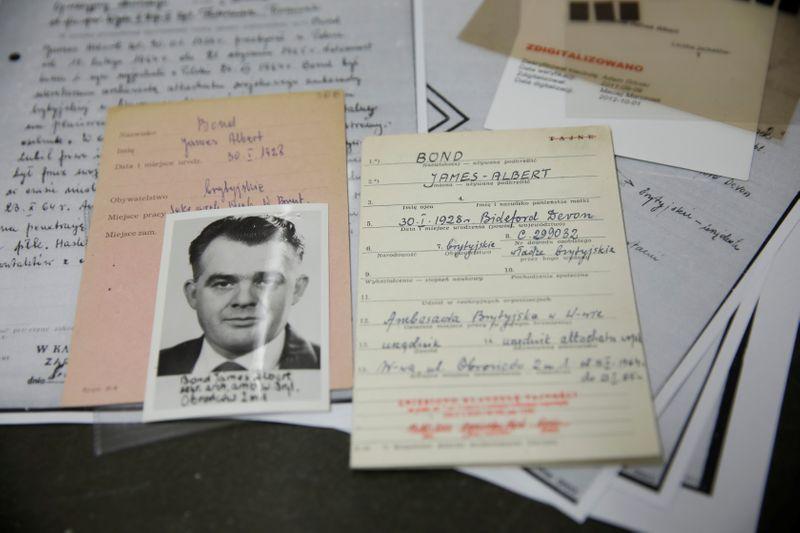With monthly subscription of USD14.99 in Ubisoft, you can enjoy hundreds of 3A games!
Mario Kart Tour Races to $200M revenue and 200M Downloads
PUBG Mobile Esports Generated 200 Million Hours of Viewing in 2020
Fortnite: Top up and Get 2 Months of Disney+ Service for Bonus
From Dawn to Dusk, Befriend, Greet and Defeat Legions of Merry Zombies.
Among Us!: Global Downloads Exceeded 200 Million




In the 1960s, Great Britain sent a spy named James Bond to Poland to monitor the activities of the Polish Communist Party, but recalled him after only a year. This may or may not have been due to the fact that his activities were less productive there.

Originally from Devon, England, James Albert Bond arrived in Warsaw in 1964 with his wife and six-year-old son, as secretary to the military attaché of British Embassy and archivist. During that time, he made several trips to the northeastern part of Poland, where he visited local intelligence stations with members of SIS (MI6), supposedly to gather information on local military installations. As a diplomat from the British Empire, Bond was closely monitored from the beginning by the Polish “Second Bureau” - the counterintelligence agency of the Ministry of the Interior - and his characters, especially his talkativeness, cautiousness, and preference for women, were well documented. Polish intelligence also recorded that in the past 10 months, the man sent his family home, and then left a few weeks later, but never to return.
Now it seems that the James Bond’s legend was nothing more than a boring archivist's job as a junior embassy staff. But he was also a family-oriented man who missed his wife and son after the Iron Curtain. The second speculation of the story, however, may be that Bond was indeed a senior intelligence officer who personally traveled to the Polish countryside to gather military intelligence.
This makes sense. It is fair to say that Western intelligence agencies have actually been operating in Poland for more than a decade because of the increasingly imminent threat previously from the Soviet Union ground armed forces to all of the Western Europe. In the beginning, MI6 spies did make frequent personal trips to the suburbs and towns of Warsaw to take pictures, draw maps, and collect every hint of military activity. They were also interested in the Polish railroad system: a 1955 Joint Intelligence Committee memo shows that at that time, the British believed that it would take at least 55 nuclear bombs hitting key parts of the Polish railroad system simultaneously to break down the Soviet Army's maneuverability.
In the mid-1960s, however, the situation was very different: The East and West had eased the tension, and espionage was less frequent, also, the threat from Soviet was less imminent. Naturally, while the intelligence services were still very interested in military intelligence, they relied more on the established networks, rather than launching fieldwork to investigate the moves on military bases; so, when they went out into the countryside, it was more like going on a picnic than gathering information. In this case, Sir Richard Wright, the head of MI6 at the time, may have decided to give a very high-profile name to this operation that might not actually be of much use. Ian Fleming’s best-selling books (the original novels of the James Bond series) had been popular for over a decade, so, even communist countries should have heard of them; even if they hadn't heard of the novels, they should have seen the Sean Connor (the original 007) movies. So, the act of James Bond’s arrival in Poland is as remarkable as a Christmas tree in the middle of the road (in Europe and the US, Christmas season is celebrated with a huge tree setting up in a square or at an intersection). Of course, even if the Second Bureau or the Internal Military Service (the Polish counter-intelligence agency) had not been fooled by this obvious hoax, they would not have ignored the man and not spy on him.
So, this could be the third guess of James Bond’s identity in the whole activity: a smoke bomb or a decoy to waste Polish counterintelligence resources, or at least to force them to devote a lot of human and material resources to spy on a small secretary and archivist. They were made to do a fruitless work to follow Bond around Warsaw’s bars and suburbs, so that other agents could have the opportunity to devote themselves to those actions and places in which Sir Richard would be more interested and more sensitive. It is generally accepted that Polish intelligence was not fully established in the mid-1960s, let alone had much of a counterintelligence capability in 1964. So, for MI6, it would be worthwhile to consume the Polish counterintelligence forces with 007 operation. It wouldn’t be the first time, nor the last time, that spies have misled and fooled counterintelligence in this way.
 We will never know whether this was a new mission by a young spy in Warsaw, or Sir Richard Wright’s plan to keep Poland a close eye on Bond. The only thing we know is that while Ian Fleming was writing spies into his novels, MI6 was using novels to dress up their spies.
We will never know whether this was a new mission by a young spy in Warsaw, or Sir Richard Wright’s plan to keep Poland a close eye on Bond. The only thing we know is that while Ian Fleming was writing spies into his novels, MI6 was using novels to dress up their spies.